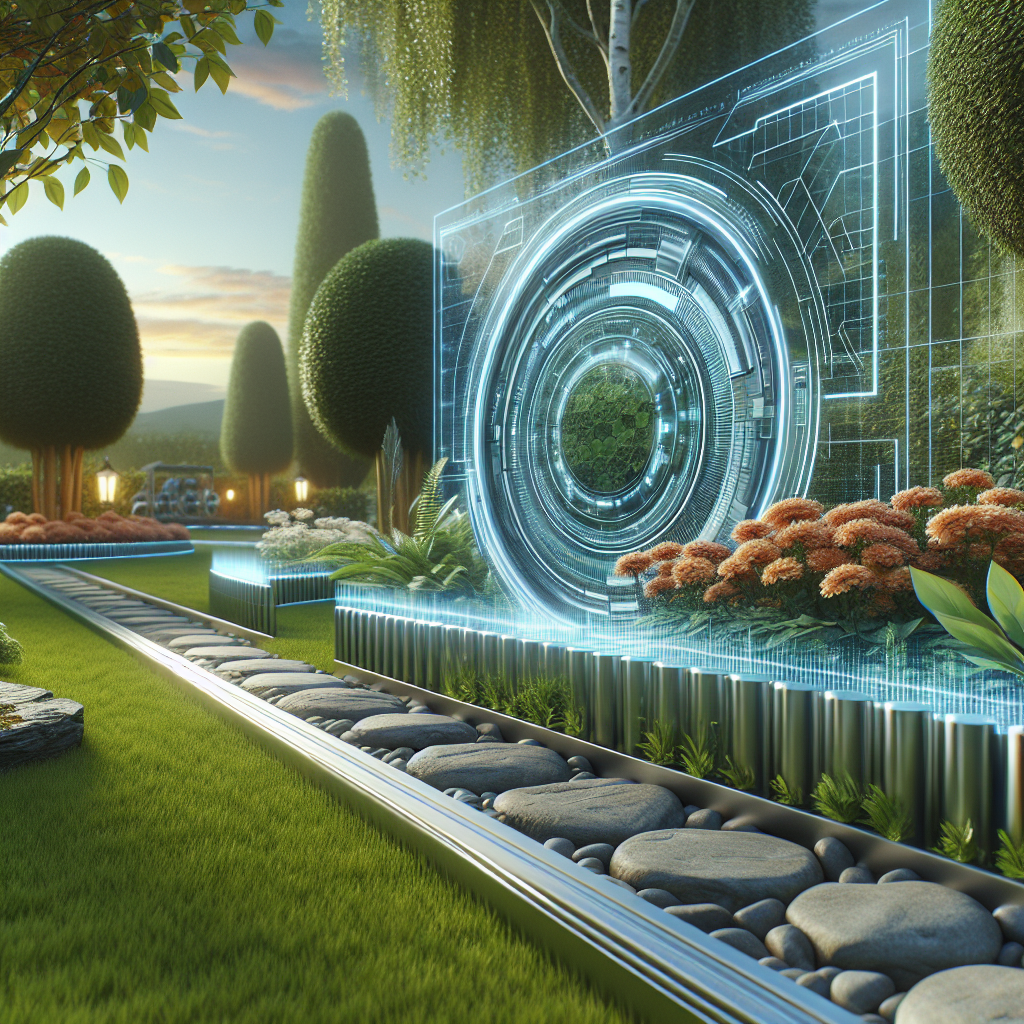Introduction
Metal edging is a popular choice in landscaping design for creating clean, defined lines and adding a polished look to outdoor spaces. This article delves into the world of metal landscape edging, discussing its various types, installation techniques, maintenance requirements, and environmental impact.
Types of Metal Edging
Steel Landscape Edging
Steel landscape edging is known for its strength and durability, making it a top choice for high-traffic areas. According to landscaping expert John DeSilvia, 'Steel landscape edging provides a sleek, modern look that defines landscaping elements with precision.'
Aluminum Landscape Edging
Aluminum landscape edging offers a lightweight option that is easy to install and resistant to corrosion. Landscape designer Jane Smith notes, 'Aluminum edging is versatile and comes in a variety of colors, making it a popular choice for residential projects.'
Corten Steel Landscape Edging
Corten steel landscape edging, also known as weathering steel, develops a rusty patina over time, adding a unique aesthetic to outdoor spaces. Landscape architect Michael Johnson explains, 'Corten steel edging blends beautifully with natural landscapes, creating a harmonious design element.'
Comparing the pros and cons of each type of metal edging
Each type of metal edging has its advantages and limitations. Steel edging is robust but may rust over time, while aluminum edging is lightweight but may not withstand heavy impacts. Corten steel offers a distinctive look but requires periodic maintenance to control rust.
Installation Techniques
Step-by-step guide to installing metal landscape edging
Proper installation is key to the effectiveness and longevity of metal landscape edging. Landscape contractor Sarah Brown provides a detailed step-by-step guide to ensure a seamless installation process.
Tools required for proper installation
Common tools needed for installing metal landscape edging include a spade, rubber mallet, measuring tape, stakes, and a hacksaw. Precision is essential when cutting and securing the edging in place.
Common mistakes to avoid during installation
Avoiding mistakes such as uneven trench depth, improper anchoring, and inadequate overlap can prevent issues with the edging shifting or becoming damaged over time.
Case Studies
Real-world examples of metal edging in landscaping projects
Case studies featuring metal edging showcase its versatility in various design styles, from modern and minimalist to rustic and naturalistic. Images of before and after projects highlight the transformative effect of metal edging.
Before and after images showcasing the impact of metal edging
Visual comparisons demonstrate how metal edging can define garden beds, pathways, and borders, enhancing the overall aesthetic appeal of outdoor spaces.
Testimonials from landscape designers on the effectiveness of metal edging
Leading landscape designers express their appreciation for the clean lines, durability, and visual impact of metal edging in their projects, emphasizing its role in elevating landscape design.
Maintenance and Longevity
Tips for maintaining metal landscape edging
Regular cleaning, inspection for rust or damage, and proper drainage around the edging can extend its lifespan. Applying a protective coating can help prevent corrosion.
Factors that contribute to the longevity of metal edging
Quality of the material, installation technique, climate conditions, and maintenance practices all influence the longevity of metal landscape edging. Choosing a suitable type of metal edging for the specific application is crucial.
Expert insights on the durability of various types of metal edging
Industry experts share their views on the durability of steel, aluminum, and Corten steel edging, highlighting the strengths and weaknesses of each material in different environmental settings.
Environmental Impact
Sustainability considerations when using metal in landscaping
Selecting recycled or recyclable metal edging materials reduces the environmental impact of landscaping projects. Landscape architects are increasingly incorporating eco-friendly practices into their designs.
Recyclability of metal landscape edging materials
Steel and aluminum edging can often be recycled at the end of their lifespan, minimizing waste and supporting circular economy principles. Corten steel's recyclability depends on the availability of facilities for processing weathering steel.
Industry trends towards eco-friendly landscape edging options
The landscaping industry is witnessing a shift towards sustainable practices, with a growing demand for environmentally friendly landscape edging solutions. Manufacturers are responding by developing more eco-conscious product lines.
Conclusion
Metal edging offers both practical and aesthetic benefits in landscaping design, providing a versatile solution for defining outdoor spaces with elegance and durability. Professionals in the landscaping industry can leverage the various types of metal edging to elevate their projects and create lasting impressions.
Call to Action
Landscape designers are encouraged to explore the possibilities of integrating metal edging into their design toolbox, considering its unique advantages in enhancing the visual appeal and functionality of outdoor environments. Join the conversation on sustainable landscaping practices and share insights on best practices for utilizing metal edging effectively.
Topics




